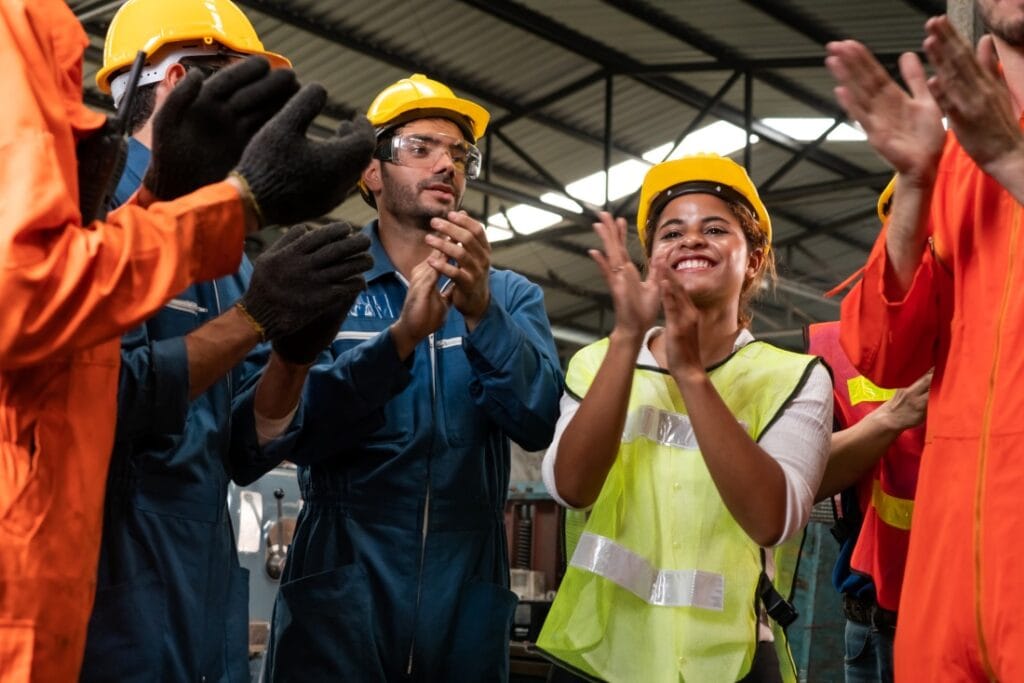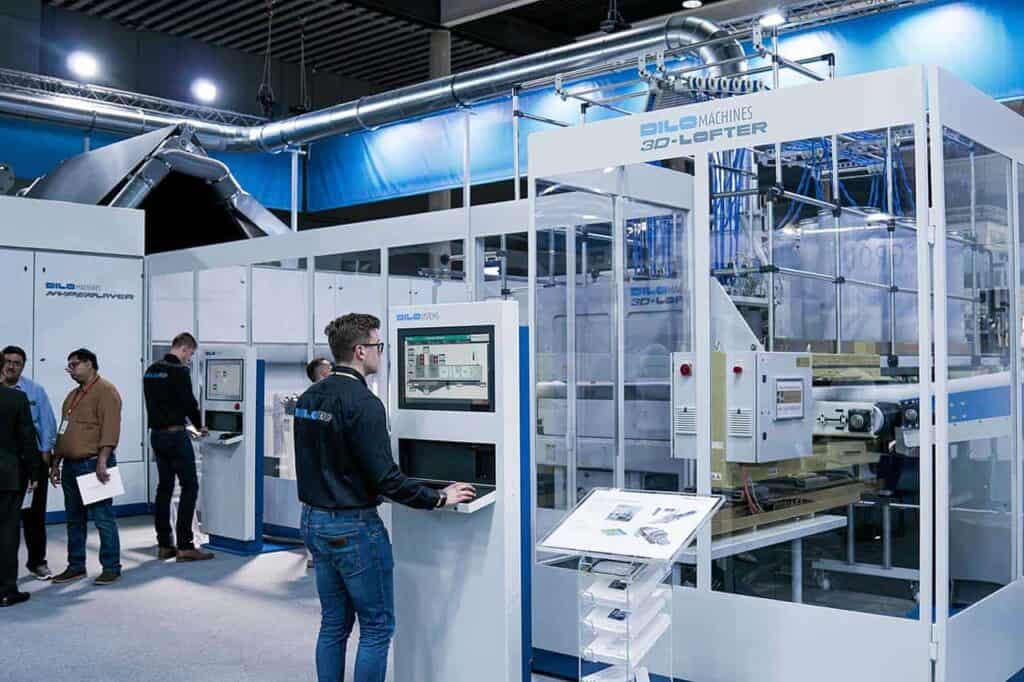제조업은 그 어느 때보다 중요한 기로에 서 있습니다. 지속가능성을 사업 전반에 통합해야 한다는 압력이 거세지고 있으며, 그렇지 않으면 아무런 조치도 취하지 않을 경우 심각한 결과를 맞이하게 될 것입니다. 끊임없는 기후 변화와 고갈되는 천연자원이 전통적인 제조 방식에 그늘을 드리우고 있는 가운데, CEO들은 높은 초기 비용, 공급망 정비의 복잡성, 그리고 끊임없이 변화하는 규제 요건 준수와 같은 중대한 과제를 극복하며 사업 전반에 걸쳐 지속가능한 접근 방식을 채택하기 위해 노력해야 합니다.
하지만 혁신적인 전략을 채택하는 제조 분야 리더들은 효율성을 높이고 지속가능성을 옹호할 뿐만 아니라, 궁극적으로 넷제로 목표 달성을 위해 노력하면서 사업 성장의 혜택을 누릴 수 있습니다. 최근 가트너 설문 조사에 따르면, CEO의 69%가 지속가능성을 생산성과 효율성보다 더 중요한 핵심 성장 동력으로 보고 있습니다. 가트너의 수석 부사장 애널리스트인 크리스틴 모이어는 지속가능성이 기업 리더들의 경쟁 우위 요소이며, 개선이 점점 더 중요해지고 있어 10대 기업 우선순위 중 하나로 자리매김하고 있다고 말했습니다. 그리고 우리도 이에 동의하는 경향이 있습니다.
제조업에서 지속 가능성은 경제적으로 실행 가능한 프로세스를 통해 제품을 생산하고 에너지와 천연자원을 보존하면서 부정적인 환경 영향을 최소화하는 것으로 정의합니다.
제조업에 대한 지속가능성의 과제, 이점, 그리고 적용을 고려할 때, 제조업의 지속가능성 현황은 어떠하며, 제조업체들이 지금 당장 행동에 나서야 할 시점은 언제일까요? CEO들이 행동에 나서야 하는 데에는 여러 가지 이유가 있습니다. 정부, 기후 활동가, 소비자 등 다양한 이해관계자들이 지속가능한 관행을 지지하도록 촉구하는 것도 그 중 하나입니다.
열기가 고조되고 있습니다. CEO들이 지금 지속 가능한 관행을 채택해야 하는 이유
소비자, 이해관계자, 직원, 그리고 정부의 요구로 인해 제조업체 CEO들이 친환경 경영을 실천해야 한다는 외부 압력이 거세지고 있습니다. 이 분야는 높은 수준의 배출과 오염으로 악명 높기 때문입니다. 매사추세츠 공과대학교(MIT) 연구진에 따르면, 섬유 산업은 전 세계 온실가스 배출량의 약 5~10%를 차지하며, 해운과 항공 산업의 배출량을 합친 것보다 더 많습니다. BMJ 리서치에 따르면, 에너지 산업은 화석 연료로 인한 대기 오염으로 매년 500만 명 이상의 추가 사망자를 발생시키는 등 다른 주요 산업 분야로 꼽힙니다.
배출량 외에도, CEO는 기업 평판을 긍정적으로 유지해야 합니다. 친환경적인 관행을 장려하는 기업은 소비자뿐만 아니라 이러한 미래 지향적인 이니셔티브에 안도감을 느끼는 이해관계자, 그리고 고용주가 친환경적인 관행을 우선시하기를 바라는 직원과 미래 구직자들에게도 매력적으로 보이기 때문입니다. 또한, PwC는 수익 측면에서 소비자들이 지속가능한 방식으로 생산되거나 공급되는 제품에 평균 9.7% 더 많은 비용을 지출할 의향이 있다고 보고했습니다.
기후 변화와 자원 고갈 문제를 해결해야 하는 긴급성이 커짐에 따라 CEO는 새로운 기술, 환경, 사회 및 거버넌스(ESG) 프레임워크와 전략을 채택해야 합니다. 녹색 성공을 향한 길을 계획하다 그들은 미래에 대비한 운영과 사업을 추진합니다.
CEO가 2025년에 채택해야 할 3가지 지속 가능한 관행:
지난 10년 동안 CEO들은 더욱 엄격해진 규제, 증가하는 환경 및 소비자 요구, 그리고 AI와 같은 기술 혁신에 힘입어 제조 운영을 혁신하고 개선해 왔습니다. 액센추어에 따르면, 제조업은 2035년까지 생산성이 40% 이상 증가할 것으로 예상됩니다. 그리고 이것이 전부가 아닙니다. 세계경제포럼(WEF)은 제조 공정에 AI를 도입하면 최대 30%의 비용 절감 효과를 얻을 수 있다고 보고했습니다.
AI는 올해 제조업 리더들이 반드시 채택해야 할 가장 중요한 지속가능성 실천 방안 중 하나입니다. 아래에서 2025년을 위한 세 가지 주요 방안을 살펴보겠습니다.
1. AI는 지속 가능성 진행을 증가시킵니다.
AI 기반 기술은 지속 가능한 제조 분야에서 성공을 증대시킬 수 있습니다. 생산성을 향상시킬 디지털 기술 생산 중단 시간을 최소화하여 온실가스(GHG) 배출을 줄이는 것입니다. 무선으로 연결된 공장, 실시간 모니터링, 그리고 기계 설정의 비효율성을 파악할 수 있는 데이터를 활용한 고급 분석을 통해 에너지 사용량과 탄소 배출량을 줄일 수 있습니다.
2. 순환경제 원칙의 힘
재활용 및 재사용과 같은 순환 경제 원칙을 제조 과정에 통합하는 것은 원자재 소비와 매립지로 가는 폐기물을 줄이는 데 매우 중요합니다. 또한, 내구성 있는 소재와 모듈식 구성 요소를 사용하여 수명을 고려한 제품을 설계하면 제품 수명 주기를 연장할 수 있습니다.
3. 지속 가능한 도구, 소싱 및 생산 방법의 증가
제조업체는 재생 가능한 재료를 채택하는 것뿐만 아니라 에너지 효율적인 기계, 에너지 최적화 소프트웨어, 순환형 제조 도구, 스마트 제조 시스템을 도입함으로써 지속 가능성을 달성할 수 있습니다.
성공의 모습 – 아디다스, 지속 가능한 패션 시대로 진입
제조업체들이 운영 과정에서 지속가능성을 구현하는 데 상당한 어려움을 겪고 있는 가운데, 일부 기업들은 이를 선도하며 실현 가능성을 입증하고 있습니다. 아디다스는 목재 펄프를 원료로 지속가능한 섬유를 생산하는 핀란드 기업 스피노바(Spinnova)와 파트너십을 맺고 지속가능성에 대한 의지를 보여주었습니다.
다른 제조업체는 25%의 목재 기반 섬유로 만든 adidas TERREX HS1을 만든 이 파트너십에서 배울 수 있습니다. 75퍼센트 유기농 면. 이번 협업은 Spinnova의 공정이 유해 화학 물질을 사용하지 않고 기존 방식보다 폐기물 발생을 최소화하여 친환경적인 제품도 패셔너블하게 만들 수 있음을 증명합니다. 섬유 제조 방법.
제조업의 지속 가능성의 미래에는 기술 활용이 필요합니다.
위에서 언급한 어려움에도 불구하고, 제조업체들은 아디다스의 성공에서 얻은 교훈을 자사 사업에 적용할 수 있습니다. 핵심은 이 분야에서 성공하려면 시간과 끈기가 필요하다는 것입니다. 아디다스의 경우, 올해 제품 10개 중 9개가 지속가능한 기술, 소재, 디자인 또는 방식을 채택할 예정입니다. 이는 거의 5년이 걸린 중요한 성과로, 헌신적인 노력만으로도 지속가능한 성공을 이룰 수 있음을 보여줍니다.
CEO는 최첨단 기술을 통합하고, 지속 가능한 조달 및 생산 방법을 촉진하고, 마지막으로 지속 가능한 성숙도를 평가하여 시작하고 개선할 곳을 파악할 수 있는 프레임워크를 활용하여 지속 가능성에 대한 포괄적이고 친환경적인 접근 방식으로 앞으로 나아갈 길을 계획해야 합니다.
공장과 운영의 혁신이 필요한 부분을 정확하게 평가함으로써 CEO는 디지털 혁신과 친환경 여정을 추진하기 위한 맞춤형 로드맵을 만들 수 있습니다. INCIT의 스마트 산업 준비 지수 혁신을 촉진하고, 사업 운영을 ESG 위반자에서 생산 현장 및 그 너머의 방어자로 전환하는 데 활용할 수 있습니다. 최초의 독립적인 디지털 성숙도 도구인 Smart Industry Readiness Index는 모든 산업 및 규모의 제조업체가 혁신 여정을 시작하고, 확장하고, 유지할 수 있도록 지원하는 글로벌 벤치마크 역할을 합니다. 자세히 알아보기 보다 지속 가능하고 미래 지향적인 제조 부문을 구축하기 위해 INCIT가 산업 변혁을 촉진하기 위해 수행하는 작업에 대해 설명합니다.


